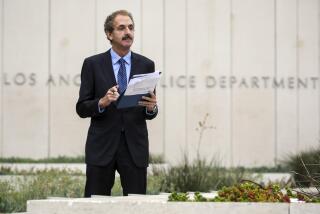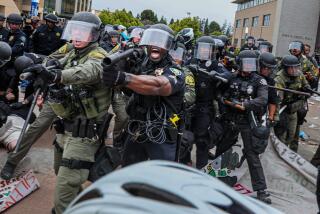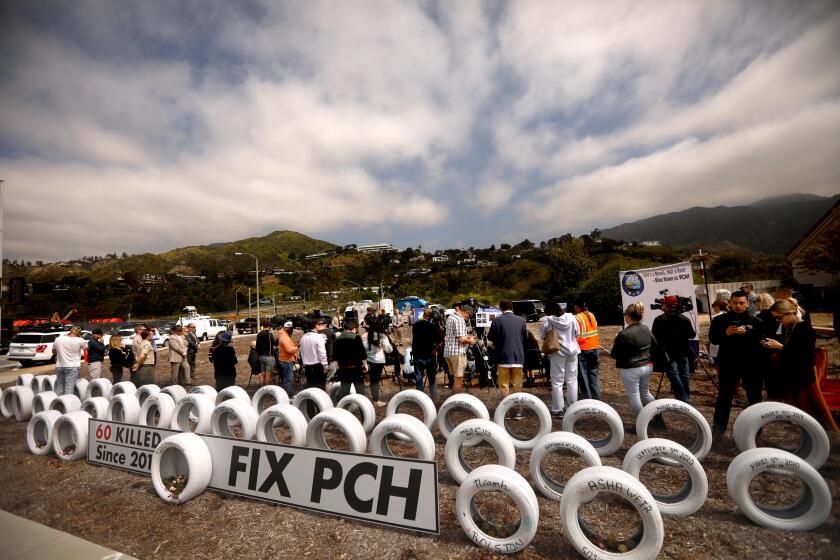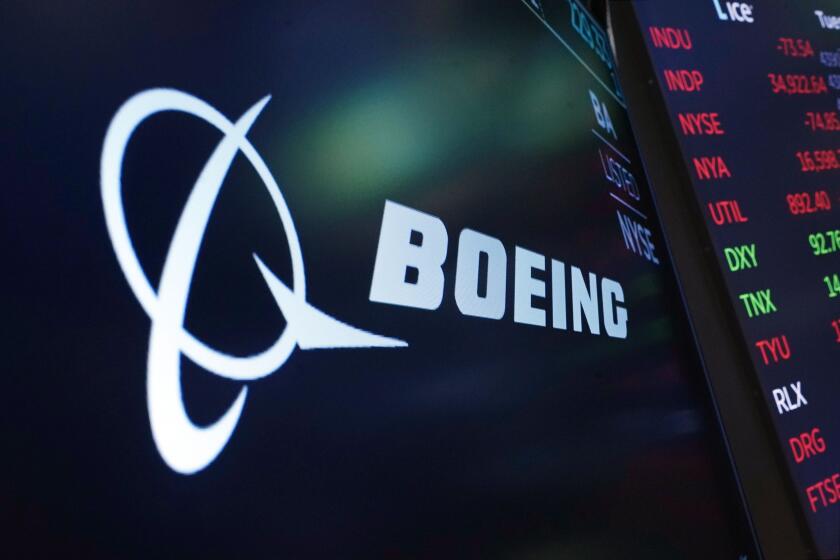The L.A. of the Future Needs Rail : Trains: Stopping the Red Line wouldn’t solve the MTA’s fiscal distress; the modest fare increase was necessary.
There has been a loud and sometimes acrimonious debate lately over the expenditure of public funds for a rail system in the Los Angeles Basin. Some critics have charged that the Metropolitan Transportation Authority’s commitment to rail construction has placed its bus operation in financial peril.
Responsible public officials have two distinct and yet critical missions. They must look to the future and plan the programs and projects that will allow the generations who follow us to have secure lives and economic opportunity. They must also, on a daily basis, manage complex governmental enterprises in a cost-effective way so that services are provided efficiently and effectively. These are not choices; they are imperatives.
The dual mission of the MTA is to construct a quality regional rail system while operating the very best possible regional bus system. The Red Line is a critical part of Los Angeles’ future. Twice in the past 14 years, voters have supported local tax measures to construct a rail system. In partnership with the state and federal governments, the Red Line is well under way. Los Angeles soon will have a modern, clean and efficient transportation system that will serve our citizens well into the next century.
The MTA bus operation is in fiscal distress. Ridership has declined and costs have escalated. Contributing factors include generous labor contracts negotiated when times were better; reductions in federal and state subsidies, and fares that have only recently been changed for the first time in six years.
Among the top 10 U.S. transit operators with both bus and rail operations, the MTA is the only one dealing with a $126-million operating shortfall. Other operators have increased fares to $1.25 and higher in cities with a lower cost of living. They have renegotiated labor contracts and restructured service to improve quality and reduce costs.
Los Angeles does not need to choose between a well-run bus system and the creation of a balanced transportation system, which includes rail in heavy urban corridors and high-occupancy-vehicle lanes for mobility countywide. With prudent fiscal management and responsible decision-making, Los Angeles can have the transportation system that voters have demanded. Elected and appointed officials on the MTA board last week made the hard choice: It was time to raise the fares on MTA buses and trains in keeping with fare changes in other cities.
The fare increase provides for a discounted token of 90 cents, 45 cents less than the cash fare of $1.35. People unable to afford the current $42 monthly single-zone pass have been paying the cash fare. Raising the cash fare to $1.35 and offering a discounted token eliminates the unfair subsidy: Cash payers have been providing 59% of MTA revenue while taking 39% of the trips; monthly pass users have paid an effective fare of only 43 cents.
The changes voted by the MTA board include premium fares for premium service on rail lines and express buses. By increasing the basic fare to $1.35 and eliminating the $42 monthly pass, bus riders will contribute 42% of costs, the percentage they were paying in 1989.
Some critics say we should discontinue the Metrolink rail program, truncate the Red Line at its current four miles and maintain bus fares at $1.10 or even lower. But sacrificing the future to mismanage the present is irresponsible. If this region is to both grow and prosper, the movement of people and goods must be efficient, convenient and contribute to better air quality. We already have several corridors where the congestion is so severe that it’s simply impossible to add more buses or to increase capacity. We must plan for the future and invest wisely, while rationally managing our current operation so that we continue to have the necessary dollars to match state and federal grants to complete our rail system as soon as possible.
Cost containment, staffing reductions, fare increases and service restructuring are all necessary for the MTA to put bus operations on a firm financial foundation. Failing to do so will cost Los Angeles dearly.
More to Read
Start your day right
Sign up for Essential California for news, features and recommendations from the L.A. Times and beyond in your inbox six days a week.
You may occasionally receive promotional content from the Los Angeles Times.






